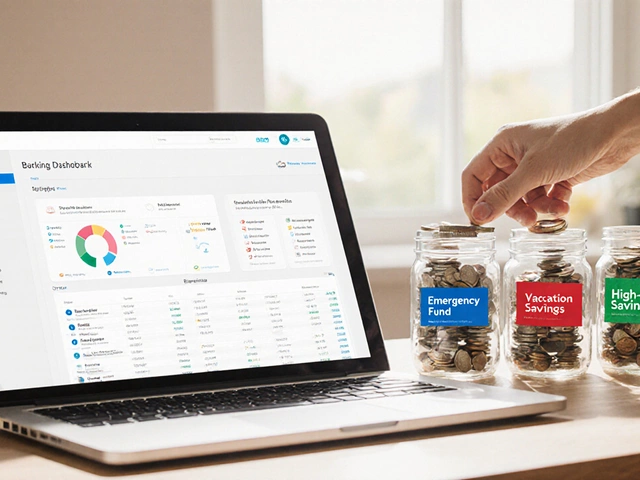
Ever felt like navigating GST claims is like solving a 1000-piece puzzle with half the pieces missing? You're not alone! Knowing exactly when to file that GST claim can seem like jumping into a labyrinth of regulations, but once you get the hang of it, it becomes second nature.
First off, it’s all about timing. The optimal moment to claim that GST isn't just when your bookkeeper throws a stack of invoices your way. To maximize cash flow, it’s crucial to line up your claims with your reporting periods—it might just save you a heap of headaches down the road.
Also, good documentation is your new best friend. Think of every receipt and invoice as a tiny piece of evidence securing your rightful claim. Trust me, keeping those organized will keep the tax folks happy and you stress-free during audits.
But here’s something else: don’t rush the process. Mistakes in GST filing are common but easily avoidable. A simple double-check can stop erroneous claims or missed deadlines from biting you later. Stick around as we delve into these nitty-gritty details to make your GST journey as smooth as possible.
- Understanding GST Claim Basics
- Optimal Timing for GST Claims
- Documentation and Compliance
- Common Mistakes to Avoid
Understanding GST Claim Basics
So, what's the deal with GST claims? Think of it like this: you're running a business, and you've paid tax on some supplies you bought. Now, you want to get some of that tax back, right? That's where the Goods and Services Tax (GST) claim comes in. It's a way for business owners to recover the GST they’ve already paid on purchases and other expenses. But hey, there's a method to the madness.
To make a GST claim, you must be registered for GST. Without it, you’re not eligible to claim GST credits. Being registered is like having a ticket to the game—you need it to play.
Next thing to know? Timing matters! Typically, you claim GST credits in the period you have your tax invoice in hand. So, make sure you're keeping a sharp eye on those invoices. Remember this when filing your GST refund because you want to align your claims with your reporting periods. Most businesses report quarterly, but if you're a particular bean counter, monthly might be your groove.
A common tip from industry pros: always ensure that the invoices are in your name or your business's name. Only then can you effectively reclaim the tax.
Curious about what you can actually claim? Here’s a quick list:
- General business expenses like office supplies and utility bills.
- Big-ticket items such as machinery and office equipment.
- Vehicle expenses if you use a company car for business operations.
But it’s not a free-for-all. For instance, expenses related to making GST-free sales or private purchases aren’t claimable.
Here's a handy table to recap common claimable items:
| Expense Type | Eligible for GST Claim? |
|---|---|
| Office Supplies | Yes |
| Employee Salaries | No |
| Marketing Costs | Yes |
Spotting the patterns here simplifies the GST filing process. Getting comfy with these basics is a great first step in making your GST claims feel like a breeze rather than a burden.
Optimal Timing for GST Claims
So when's the best time to claim your GST, you ask? The golden rule is to align with your tax reporting periods. It might sound like a no-brainer, but this simple action can actually help boost your cash flow and keep your accounts looking sharp.
Generally, businesses file their GST claims every month, quarter, or year, depending on their turnover and what's most manageable. Monthly filers, especially big players with turnovers over Rs. 5 crore tend to file more frequently due to their volume of transactions. But hey, even smaller businesses can consider monthly filings if it helps clear cash bottlenecks.
Here's a pro tip: many businesses use the end of their fiscal year as a checkpoint to make sure they've captured all possible claims. This strategic move can help mop up any leftover credits that might’ve slipped through the cracks during the year.
Nancy Kumar, a seasoned tax consultant, says, "Aligning your GST claims with your cash flow needs is as vital as determining the most convenient filing frequency. Planning not only saves money but reduces stress at filing deadlines."
And let’s face it, no one likes surprises come tax time. So, keep an eye on your filing dates and set reminders. Remember, the quicker you file your claims, the faster you get your refunds. A little planning goes a long way.
Another thing: knowing the specifics of when you can claim is crucial. Generally, you must do it within the prescribed time limits—that’s 36 months from the relevant invoice date. Miss that window, and you might miss out on those credits altogether.
For the curious folks looking to optimize every rupee, here's a breakdown of how often businesses might consider filing:
| Turnover | Filing Frequency Recommendation |
|---|---|
| Up to Rs. 1.5 crore | Quarterly or Monthly |
| Rs. 1.5 to 5 crore | Monthly |
| Above Rs. 5 crore | Monthly |
So, there you have it. Tuning into the right timing for your GST claims isn’t just about ticking boxes. It’s about making financial decisions that fit your business rhythm. Keep your eyes on those dates and your documents handy!

Documentation and Compliance
Alright, so let’s face it—getting your GST filing right starts with having your paperwork in perfect order. The tax folks want to see that every GST claim you make is backed by solid evidence, and here’s why documentation is your golden ticket.
First up, make sure every invoice you receive is compliant with GST rules. What does that mean? Each invoice should clearly show the supplier's details, a proper invoice number, the date, and the amount of GST charged. Missing any of these? Well, the claim might just get tossed out.
Now, don't forget about those receipts from small expenses—they add up too, and every bit counts in your tax returns. Thankfully, in today's digital world, there are handy apps that can help you scan and organize these, making it much easier for that rainy day when you need those claims.
Compliance isn’t just about having info stored; it’s about having it stored safely and accessibly. Most regulations require businesses to keep these records for at least 5-7 years, depending on where you’re at. Whether you prefer cloud-based solutions or a good old filing cabinet, make sure it’s all easy to retrieve.
Here's a quick checklist to keep you on track:
- Ensure all invoices are GST compliant.
- Regularly scan and organize receipts.
- Maintain records for the required retention period.
- Double-check your GST refund claims against your records before filing.
Getting compliance right is all about those simple habits—procrastination is the enemy here. Stay on top of your game by scheduling regular checkups on your documentation. Trust me, when you’ve got everything in order, responding to audits or inquiries becomes a breeze, and you'll thank yourself the next time you’re filing for a GST refund.
Common Mistakes to Avoid
Many folks stumble into the same traps when handling GST filing. But hey, here's the good news – once you're aware, they're pretty easy to dodge.
First mistake: claiming GST too late. You might think it doesn't matter as long as it gets done eventually, but late submissions can mess up your cash flow and even result in penalties. It's best to set a schedule aligned with your reporting periods.
Another whopping blunder is improper documentation. Submitting claims without solid proof, like valid invoices or receipts, is a common issue. Missing bits and pieces can lead to claims getting denied. Just remember, every invoice should clearly show the supplier's details, GST amount, and sometimes, the date of supply.
Here's a sneaky one: claiming GST on items that don't qualify. Not every penny you spend on your business can be claimed. Make sure all expenses are directly linked to your business activities. Things like personal expenses dressed up as business costs can get you into hot water.
The double claims trap is another danger zone. Sometimes in the rush or confusion, folks end up claiming the same invoice twice. Keeping track of what you've already claimed will save you from the hassle of sorting it out later.
- Incorrect GST Codes: Using the wrong GST code can lead to incorrect claims and payments. Always double-check the codes against updated guidelines.
- Failing to Follow Up: Once you've lodged a claim, keep an eye on it. Sometimes adjustments need to be made, or additional info might be requested.
A quick heads-up: if you think you've botched up, don’t panic! Most errors can be corrected in later returns. Plus, many tax offices are cool about helping you sort things out, as long as you're upfront.








Write a comment